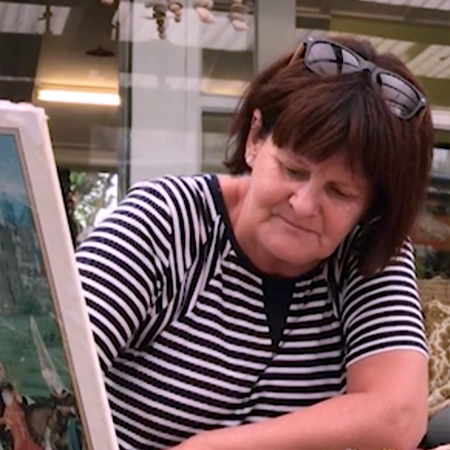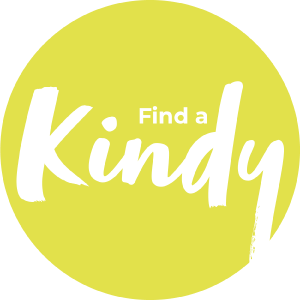
The benefits of learning te reo Māori
Why Learn Te Reo Maori
The Māori language is undergoing a real renaissance in Aotearoa/New Zealand. Where once the goal was for the language to survive, today it’s about helping it thrive and grow stronger into the future. There are big benefits to society - and each of us - from all improving our skills and understanding in this area. But what’s in it for individual children and families?
The answer is ‘a lot’, as Neroli Gardner, Head Teacher from Kidsfirst Sunbeam, explains.
“There’s the stimulation of neural pathways that happens with exposure to anything new, which helps children’s cognitive development and opens the door to even more knowledge and understanding,” Neroli says.
“Any child who is multilingual is going to get those benefits in terms of brain development. It’s that whole left/right side of the brain idea - the more languages they speak, the more exposed they are to a richer linguistic life, and a richer life in general. It’s similar to how we learn other languages - French or Chinese or Japanese - as teenagers, but these children get the advantage of starting early.”
Research shows that there’s a lot of wisdom in the long held belief that languages are easier to acquire at younger ages.
“The children we are teaching come to us with open minds - they’re little sponges. It’s so much easier for them to pick up other languages at the age we teach. We have children here who can speak two or three languages, if you put te reo in the mix.”
Neroli says whānau quickly come to see that the benefits lie way beyond the language itself, and new learning.
“Children need a strong personal cultural identity, and before they can move forward with their own cultural identity, they need to have a strong understanding of what’s gone before,” Neroli says.
“All cultures have a lot to learn from Māori traditions, customs, and concepts like whanaungatanga (the importance of family) and manaakitanga (caring). These teach us how to care for one another and how to respect where we have come from, as much as where we are going. It helps to make children more well rounded.”
These rich traditions take important learning deeper, give it more meaning and bring them to life.
“Looking after the land - kaitiakitanga - is a really good example. Children need to have an understanding of what’s gone before, so they are more passionate about taking care of the land in the future. The same applies to the cultural history of New Zealand – and it’s exponential: If we can teach them about the stories and traditions, they sing waiata (songs) and speak about them in the language, and in turn they can share all of that with their whānau and wider community.”
The importance of taking care of the planet, starting with our own neighbourhood, is driven home through everyday actions that ultimately become habits.
“That happens through helping them learn about looking after waste and reducing it, but also through looking after the land. We do a lot of gardening and also things like walking around the local neighbourhood, visiting local parks, picking up rubbish, and looking after our immediate community, as well as our own.”
It doesn’t take long for hungry young minds to get the gist of things and start to take the initiative themselves.
“Even if we just go for a visit to the park or the school, now, the children are always insistent that they stop and pick up the rubbish along the way. It’s really been instilled in them.”
Simple acts like naming also make a difference.
“We teach children the correct names of the native trees and birds. If they can put a name to something, they are usually more inclined to want to look after it. It’s a bit like if somebody walked into the room and didn’t use your name, you wouldn’t feel as well respected.”
Kidsfirst Sunbeam is located in a busy suburban neighbourhood, but also just a short bus ride away from the Christchurch CBD, bringing unique opportunities to connect with New Zealand’s history.
“So we also have an emphasis on place-based education - helping children learn more about where they come from. We’re close to town, so we go in on the bus. Places like Victoria Square are rich in both English and bicultural history. We explore the city, we might go to the art gallery. That way, children can see where they are in the wider community, and in turn, the wider world.
Within the kindergarten, the Sunbeam teaching team take every opportunity to use Te Reo Māori, and the influence is going beyond the tamariki.
“We sing a lot of waiata, we instil Te Reo in our routines and when giving positive feedback to children. We try to use it as much as we possibly can."
"We’ve noticed children and parents starting to greet us in Te Reo when they come in in the mornings. It’s not unusual for a parent to come in and speak a greeting in Te Reo, rather than English. So the children are teaching the parents as well. We’re lucky in our community that families are genuinely interested.”
The Sunbeam kindergarten tamariki, teachers and whānau have an added advantage in their Te Reo Māori endeavours, thanks to Rihari Taratoa-Bannister, a kaiako (teacher) proficient in the language.
“I remember his first day when we had a mihi whakatau (welcome speech) to welcome Rihari and he told the children the story of his life in Te Reo. I just looked around the children, and there were these huge big eyes, just watching. He’s a great story teller, and he brings the language to life much more vividly. I sit and watch the two year olds just gazing at him when he’s speaking to them in Te Reo, and it’s beautiful. Really lovely.”
She says the integration of Te Reo Māori and its traditions are now just part of everyday kindergarten life.
“Last Matariki, we were learning about the stars and we had a puzzle out on the table depicting all the planets. Because we have Rihari here, and he talks a lot about the Māori world, the children expect it to be present and part of things. One wee boy walked up to the puzzle and asked ‘where’s the Māori world?’ It really offers children another whole opportunity to practise critical thinking. For example, there are these atua, these gods, but what might they have looked like? Because of course, every time you pick up a book it’s somebody else’s different perspective.”
Long held traditions have gained new depth and meaning by incorporating Māori customs.
“For example, when children go off to school, we now farewell the whole whānau, not just the child. It’s not just singing them off to school, it’s saying goodbye to the whole family and what they’ve contributed and all the teachers are involved. Little things like that make a big difference.”
“We teach children the correct names of the native trees and birds. If they can put a name to something, they are usually more inclined to want to look after it. It’s a bit like if somebody walked into the room and didn’t use your name, you wouldn’t feel as well respected.”
For Neroli, whose training 38 years ago did little more than skim over Māori culture and Te Reo, the changes inside of the kindergarten and beyond are heartening.
“I didn’t learn Te Reo in my training, and I took some private lessons to get my skill levels up. Since then, our Kidsfirst professional development has helped take it even further. Over time, I’ve just fallen in love with the language and culture. There are so many good things about it.”
She says the growing integration of the language into everyday New Zealand life is evident everywhere.
“I’m starting to see a real shift in the wider world with people actually wanting to learn. There are courses open to anyone who wants to learn, like Toro Mai if they’re really keen, and of course places like Fush, the fish and chip shop that had classes that were so popular, they had to add another weekly class and rent out big rooms.”
In the spirit of ako (teachers learning alongside children), the Sunbeam team are improving their own Te Reo Māori every day.
“Our children are so used to it now, it’s just natural to use the language, and we’re all learning so much from Rihari. It’s great to have the chance to correct our pronunciation when it’s not quite right or to learn more. Just like the children, everyone is trying to learn from one another.”
Kaiako wisdom:
Want to do better at home? We asked Neroli for her top 3 tips:
• Use te reo teaching apps and pages
“There are a lot of great apps that are teaching children te reo they can put on their phone, and good pages on Facebook you can engage with to learn more about the language and give you tips on how to use it at home”
Kupu Maori NZ (https://www.facebook.com/kupu.maori.nz/)
Duolingo Te Reo (https://www.facebook.com/duolingotereo/)
Reo Maori (https://www.facebook.com/reomaori/)
• Make the most of bilingual books
Bringing bilingual books into the home is an excellent way to bring more te reo into children’s lives.
• Ask for helpDon’t be afraid to ask your teaching team for ideas: “A lot of parents ask for the words to waiata or lists of some simple words they can use at home. It’s so great to see whānau really involved and wanting to get in and support their children.”
Teacher Profile:
Neroli Gardener

Neroli has been with Kidsfirst for 25 years. “ I love working for an organisation with strong support networks and where education remains at the core of what we do.
I am very committed to bicultural practice and providing an environment full of wonder and inspiration and where uninterrupted time and space provides opportunity for creative and critical thinking. When I’m not putting my all into my job, I am passionate about my whānau and love sport – either watching or playing – Cricket and Netball are my picks.”
JOIN OUR WHĀNAU





